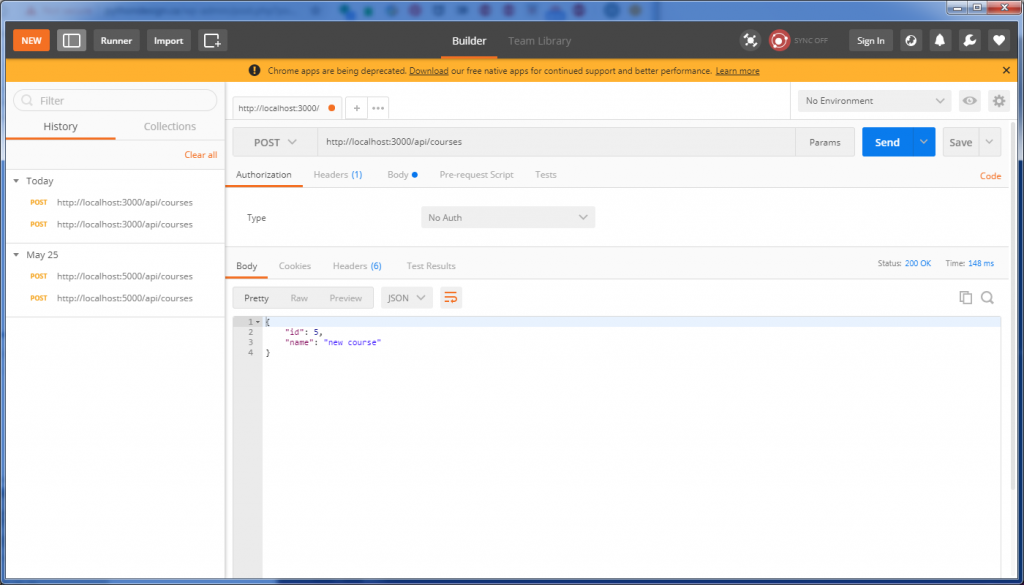C:\WASClient> wsadmin -lang jython -host 192.168.1.5 -port 8879
WASX7209I: Connected to process "dmgr" on node serverCellManager01 using SOAP connector;
The type of process is: DeploymentManager
WASX7031I: For help, enter: "print Help.help()"
wsadmin> execfile("C:\WASClient\scripts\was_scripts.py")
wsadmin> addJVMProperty(‘server1’, ‘myproperty’, ‘value’)
wsadmin> syncNodes()
wsadmin> restartServer(‘server1’)
-
How to create Application Server?
wsadmin> createApplicationServer(‘Node01’, ‘MyServer’)
‘MyServer(cells/Cell01/nodes/Node01/servers/MyServer|server.xml#Server_1402570244015)’
wsadmin> AdminConfig.save()
”
wsadmin> removeServer(‘Node01’, ‘MyServer’)def createApplicationServer (nodeName, serverName, templateName = None): if templateName == None: templateName = 'default' options = '[-name %s -templateName %s -genUniquePorts true]' % (serverName, templateName) return AdminTask.createApplicationServer(nodeName, options) def removeServer (nodeName, serverName): AdminTask.deleteServer('[-serverName %s -nodeName %s]' % (serverName, nodeName)) -
How to retrieve all Ports used by a Server?
def getServerPorts (nodeName, serverName): ports = {} serverIndex = AdminConfig.list("ServerIndex", AdminConfig.getid("/Node:" + nodeName + "/")) for serverEntry in AdminConfig.list("ServerEntry", serverIndex).splitlines(): if AdminConfig.showAttribute(serverEntry, "serverName") == serverName: for nep in AdminConfig.list("NamedEndPoint", serverEntry).splitlines(): ports[AdminConfig.showAttribute(nep, "endPointName")] = AdminConfig.showAttribute(AdminConfig.showAttribute(nep, "endPoint"), "port") return ports def printServerPorts(nodeName, serverName): for (name, port) in getServerPorts(nodeName, serverName).items(): print "%40s - %s" %(name, port) -
How to set Server JVM Classpath
wsadmin> setClasspath(‘server1’, [‘/app/lib/slf4j.jar’,’/app/lib/logback.jar’])def printClasspath(serverName): jpd = AdminConfig.list("JavaProcessDef", AdminConfig.getid('/Server:' + serverName)) jvm = toList(AdminConfig.showAttribute(jpd, "jvmEntries"))[0] print "%s" % AdminConfig.showAttribute(jvm, "classpath") def setClasspath (serverName, classPaths): jpd = AdminConfig.list("JavaProcessDef", AdminConfig.getid('/Server:' + serverName)) jvm = toList(AdminConfig.showAttribute(jpd, "jvmEntries"))[0] for cp in classPaths: setObjectProperty(jvm, "classpath", cp) def setObjectProperty (objectId, propertyName, propertyValue): AdminConfig.modify(objectId, [[propertyName, propertyValue]]) def removeClasspath (serverName): jpd = AdminConfig.list("JavaProcessDef", AdminConfig.getid('/Server:' + serverName)) jvm = toList(AdminConfig.showAttribute(jpd, "jvmEntries"))[0] AdminConfig.unsetAttributes(jvm, "classpath") -
How to install Application?
wsadmin> installApp(‘C:\Sample.war’, ‘node01’, ‘server1’, ‘sample_app’, ‘/sample’, ‘mydomain_vh’)
wsadmin> installApp(‘C:\Sample.ear’, ‘node01’, ‘server1’, ‘sample_app’, vhName=’mydomain_vh’)def installApp(location, nodeName, serverName, appName, ctxRoot=None, vhName=None): cellName = AdminConfig.list('Cell') options = [ '-nopreCompileJSPs', '-distributeApp', '-nouseMetaDataFromBinary', '-deployejb', '-createMBeansForResources', '-noreloadEnabled', '-deployws', '-validateinstall warn', '-noprocessEmbeddedConfig', '-filepermission .*\.dll=755#.*\.so=755#.*\.a=755#.*\.sl=755', '-noallowDispatchRemoteInclude', '-noallowServiceRemoteInclude', '-appname', appInfo["appName"], '-MapModulesToServers', [ ['.*', '.*', 'WebSphere:cell='+cellName+',node='+nodeName+',server='+serverName] ] ] if vhName != None: options.append('-MapWebModToVH') options.append([['.*', '.*', vhName]]) if ctxRoot != None: options.append('-contextroot') options.append(ctxRoot) AdminApp.install(location, options) -
How to update JVM logs location?
wsadmin> configureJVMLogs(‘server1’, ‘/logs/Websphere/server1/’)def configureJVMLogs (serverName, logDir): logDir = logDir.strip() if (logDir[len(logDir) - 1] != '/'): logDir = logDir + "/" server = AdminConfig.getid('/Server:' + serverName) setFile(AdminConfig.showAttribute(server, 'errorStreamRedirect'), logDir, 'SystemErr.log') setFile(AdminConfig.showAttribute(server, 'outputStreamRedirect'), logDir, 'SystemOut.log') def setFile(streamId, logDir, fileName): AdminConfig.modify(streamId, [['fileName', logDir + fileName]]) -
How to Start/Stop Server
wsadmin> stopServer(‘Node01’, ‘MyServer’)def startServer(nodeName, serverName): AdminControl.startServer(serverName, nodeName) def stopServer(nodeName, serverName): server = AdminControl.completeObjectName('WebSphere:type=Server,name=%s,*' % serverName) if len(server) > 0: AdminControl.stopServer(serverName, nodeName) else: print 'Server %s already stopped!' % serverName def restartServer(nodeName, serverName): stopServer(nodeName, serverName) startServer(nodeName, serverName) -
How to synchronize the Node?
wsadmin> syncNodes(‘node01’)def syncNodes(nodeName): nodeSync = AdminControl.completeObjectName('type=NodeSync,node=' + nodeName + ',*') AdminControl.invoke(nodeSync, 'sync') def syncAllNodes(): for node in AdminConfig.list('Node').splitlines(): syncNodes(AdminConfig.showAttribute(node, 'name')) -
How to get the Server State?
wsadmin> showServerStatus(‘server1’)def showServerStatus(serverName): serverObj = AdminControl.completeObjectName('WebSphere:type=Server,name=' + serverName + ',*') if len(serverObj) > 0: serverStatus = AdminControl.getAttribute(serverObj, 'state') else: serverStatus = 'STOPPED' print "%15s %s" %(serverName, serverStatus) def showAllServerStatus(): for server in AdminConfig.list('Server').splitlines(): showServerStatus(AdminConfig.showAttribute(server, 'name')) -
Managing VirtualHost Configuration
wsadmin> createVirtualHostWithAliases(‘myhost’, [[‘host1.com’, 80], [‘secure.host.com’, 443]])
wsadmin> AdminConfig.save()
wsadmin> addVirtualHostAlias(‘myhost’, [[‘host2.com’, 80], [‘secure.host2.com’, 443]])
wsadmin> AdminConfig.save()
wsadmin> printVirtualHostAliases(‘myhost’)
host1.com:80
secure.host.com:443
host2.com:80
secure.host2.com:443
wsadmin> removeVirtualHostAlias(‘myhost’, ‘host1.com’)
wsadmin> AdminConfig.save()
wsadmin> removeVirtualHost(‘myhost’)
wsadmin> AdminConfig.save()def printAllVirtualHosts(): for vh in toList(AdminConfig.list("VirtualHost")): print "%s" %(AdminConfig.showAttribute(vh, "name")) def printAllVirtualHostWithAliases(): for vh in toList(AdminConfig.list("VirtualHost")): print "%s" %(AdminConfig.showAttribute(vh, "name")) for al in toList(AdminConfig.showAttribute(vh, 'aliases')): print "\t%s:%s" %(AdminConfig.showAttribute(al, 'hostname'), AdminConfig.showAttribute(al, 'port')) def printVirtualHostAliases(virtualHost): vh = AdminConfig.getid("/VirtualHost:" + virtualHost) if len(vh) > 0: for al in toList(AdminConfig.showAttribute(vh, 'aliases')): print "%s:%s" % (AdminConfig.showAttribute(al, 'hostname'), AdminConfig.showAttribute(al, 'port')) else: print "VirtualHost '%s' not found" % (virtualHost) def createVirtualHost (virtualHostName): AdminConfig.create("VirtualHost", AdminConfig.list("Cell"), [["name", virtualHostName]]) def createVirtualHostWithAliases (virtualHostName, aliases): virtualHost = AdminConfig.create("VirtualHost", AdminConfig.list("Cell"), [["name", virtualHostName]]) for alias in aliases: AdminConfig.create("HostAlias", virtualHost, [["hostname", alias[0]], ["port", alias[1]]]) def addVirtualHostAlias(virtualHostName, aliases): virtualHost = AdminConfig.getid("/VirtualHost:" + virtualHostName) for alias in aliases: AdminConfig.create("HostAlias", virtualHost, [["hostname", alias[0]], ["port", alias[1]]]) def removeVirtualHostAlias(virtualHostName, hostName): virtualHost = AdminConfig.getid("/VirtualHost:" + virtualHostName) for alias in toList(AdminConfig.showAttribute(vh, 'aliases')): if AdminConfig.showAttribute(alias, 'hostname') == hostName: AdminConfig.remove(alias) def removeVirtualHost(virtualHostName): virtualHost = AdminConfig.getid("/VirtualHost:" + virtualHostName) if len(virtualHost) > 0: AdminConfig.remove(virtualHost) else: print "VirtualHost '%s' not found" % (virtualHost)


